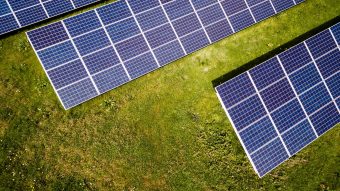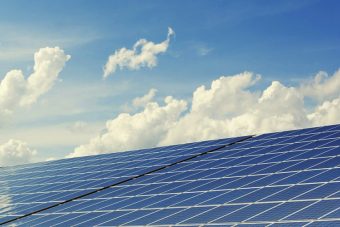
Organized by the French alternative energies and atomic energy commission, CEA; European trade association SolarPower Europe; and EIT InnoEnergy, the innovation engine for sustainable energy across Europe supported by the European Institute of Innovation & Technology (EIT), a body of the European Union, the event focussed on the redevelopment of solar PV manufacturing in Europe and how to ensure maximum synergy between EU climate and industrial ambitions.
As demand for PV-supplied electricity is set to increase from 3 percent to 15 percent by 2030, EU Commissioner for Energy, Kadri Simson, opened the session by underlining the role of solar in ensuring energy security, “No one can block access to the sun”.
Noting the upcoming EU Solar Strategy, which will put a spotlight on the sector and bolster EU solar manufacturing, Simson added:
“The only way is up for the industry; technologies will continue to grow as demand for solar energy increases. That represents an opportunity on the supply side, and the EU has the perfect ingredients to seize it.”
Speakers at the event from across the solar value chain highlighted the key advantage of the EU solar sector – it’s global technological leadership. Discussions emphasised the need to scale up manufacturing across the value chain, while rapidly addressing remaining barriers, like project and factory permitting delays, and high capital and operational costs.
Participants covered the crucial role of the European Solar Initiative in delivering the European PV manufacturing capacity required to meet demand and were given a preview of the Initiative’s next steps. The Initiative’s financing pillar – the Business Investment Platform – is expected to shortly announce funding decisions for three large-scale PV manufacturing projects.
EU Commissioner for the Internal Market, Thierry Breton, gave closing remarks outlining how solar deployment challenges can be addressed through better access to funding, support for innovation, and ensuring the resilience of Europe’s raw material supply chains. The Commissioner reiterated the European Commission’s commitment to the European Solar Initiative’s 20 GW EU manufacturing target for 2025.
More:

Thomas Courbe, DG of the French Directorate General for Enterprise, said, “The development of solar energy is essential to achieving our European climate objectives and it will only be possible if we rebuild a European photovoltaic industry. Europe has all the assets to build its strategic autonomy in this field, by supporting innovation and the development of large-scale production capacities, as we are doing in France in the framework of France 2030”
François Jacq, General Manager of the CEA, commented: “One of the assets of Europe lies in its research and technology organisations which have developed new cell generation technologies offering high levels of performance. As a RTO, CEA is conducting its R&D activities with the constant concern, not only to bring scientific answers to societal challenges, but also to accompany the transfer of our lab results to industry.”
Walburga Hemetsberger, CEO of SolarPower Europe, said: “Europe must urgently accelerate the renewable energy transition to tackle the climate crisis, and to decrease dependence on energy imports. According to our pre-crisis scenario, 30 GW of solar among which 1,5 million solar roofs will be installed by the end of 2022. The solar industry stands ready to increase these figures, given the urgency. To underpin the energy transition, we must rapidly ensure optimum conditions for European domestic PV manufacturing. This means unlocking investments to rapidly scale up industry and decisive industrial strategy that supports manufacturers.”
Diego Pavia, CEO of EIT InnoEnergy, concluded the event by underlining the importance for the industry to go fast and to be bold: “After one year, the European Solar Initiative is ramping up, with three GW-scale manufacturing projects in the making in the framework of the Business Investment Platform, and an industrially ambitious contribution to the EU solar strategy with the goal to create the competitive business environment needed to reshore the PV industry. I am confident that the EU, the industry and financial institutions, working hand in hand, will achieve the target of producing 30 GW of PV, from ingots to modules, in the EU by 2025, making the EU resilient and a global leader for sustainable PV technologies.”
Roch Drozdowski-Strehl, CEO of IPVF, said, “Our meeting pointed the strategic importance for Europe of the solar value chain and manufacturing projects that support its energy sovereignty. The contributions of world-renowned speakers have illustrated how close cooperation between industry and research is essential to drive a sustainable energy transition in Europe with global ambitions.”
Source: Solar Power Europe



